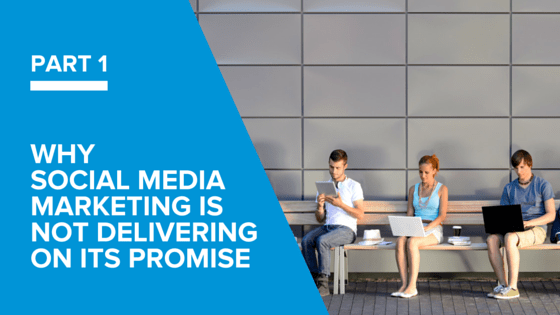
By Sean Garvey, President, InGo
In the long history of technological innovations that have impacted marketing, social media and the promise it holds seems to be unique. Never before have there been such massive expectations, coupled with a growing sense of under-performance on those expectations.
Earlier innovations, going as far back as the printing press, or telephone, or more recently email, brought with them significant expansions in reach, and significant reductions in cost. For brands looking to reach consumers with their message, these technological advances provided large boosts in marketing activity; they were able to reach more and more people, and at lower and lower cost. In the early days of adoption, these technological advances were correlated with boosts in sales, and it seemed that all that was required was to adopt the technology and “spray and pray.” Over time however, as each new marketing channel reached a saturation point, its effectiveness plummeted, as the “noise” factor spiked, showing that the correlation might have been better understood as “early adopter advantage.” Ultimately, the “noise” got so bad that civilized societies began to legislate and regulate them in order to protect the consumer (see the TCPA, the CAN-SPAM Act, as examples.)
Besides reach and cost, another aspect of these historical technological advances has been ‘targeting’ – the ability to reach the right consumer, not just any consumer, with one’s message. Over time, marketing advances have attempted to include greater and greater audience and demographic specificity. The evolution of television advertising illustrates this well. At first, advertising on broadcast TV was enough; no matter what time of day or which program, you knew you were reaching the more affluent demographic. As TV became a standard household appliance, certain times of day were designated “prime time” viewing, and certain shows could be relied upon to attract certain ages and sexes of the population. The advent of cable TV, with its local capabilities and plethora of content-specific options, enabled advertisers to pinpoint zip codes and lower the price point so that smaller, more regional advertisers were able to advertise on TV. It’s not an accident that beginning every evening at 5pm, the Golf Channel runs ads for erectile dysfunction cures on heavy rotation.
However, throughout these advances, as reach increased and cost decreased and as targeting capabilities got further and further refined, return remained fuzzy at best, and low at worst. The return on dollars spent by marketing channel remains a highly dubious pseudo-science, with the result that most marketing spend decisions are driven primarily by tradition – “because we have always done it that way.”
Social media marketing seemed like it would solve all that. Here was a marketer’s paradise: consumers freely sharing the most exact and intimate details about themselves, and not just demographic detail like sex and age, but likes and dislikes, interests and hobbies, etc. Social media itself had the added benefit of being highly addictive, so people were spending gobs of time on their social network of choice. Add to that the unparalleled instrumentation that digital technology provides, and it is no wonder social media marketing had out-sized expectations. Never before had there been such a powerful intersection of knowledge about, and access to, the target. Marketing on social media should literally be like shooting fish in a barrel, except in this case, the fish help load the gun.
But it’s not…..
Check back next week as we delve further into social media ROI and how it is perceived by marketers. READ PART 2


